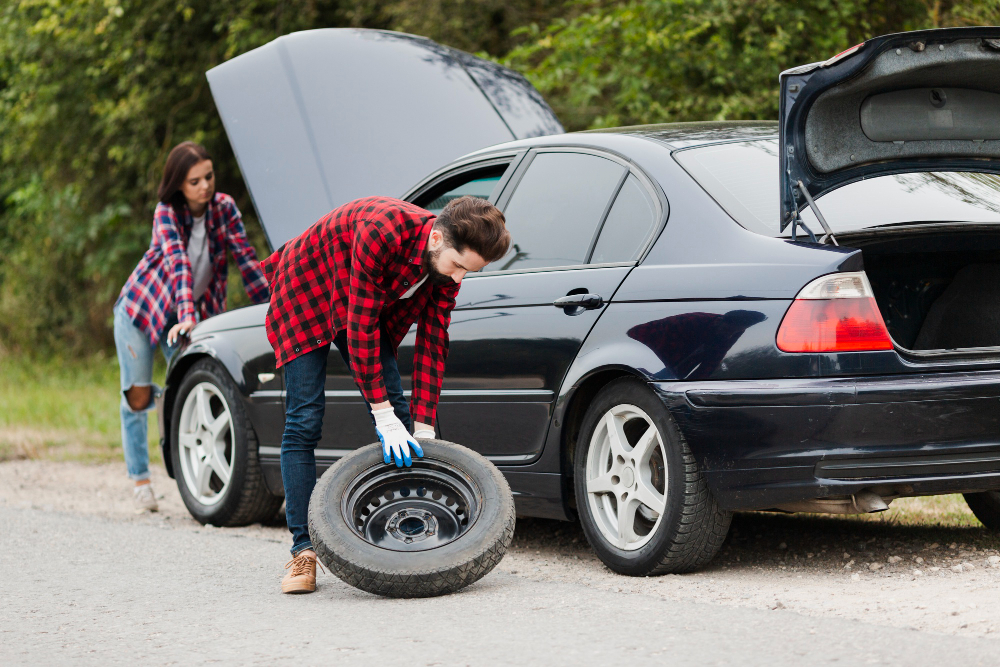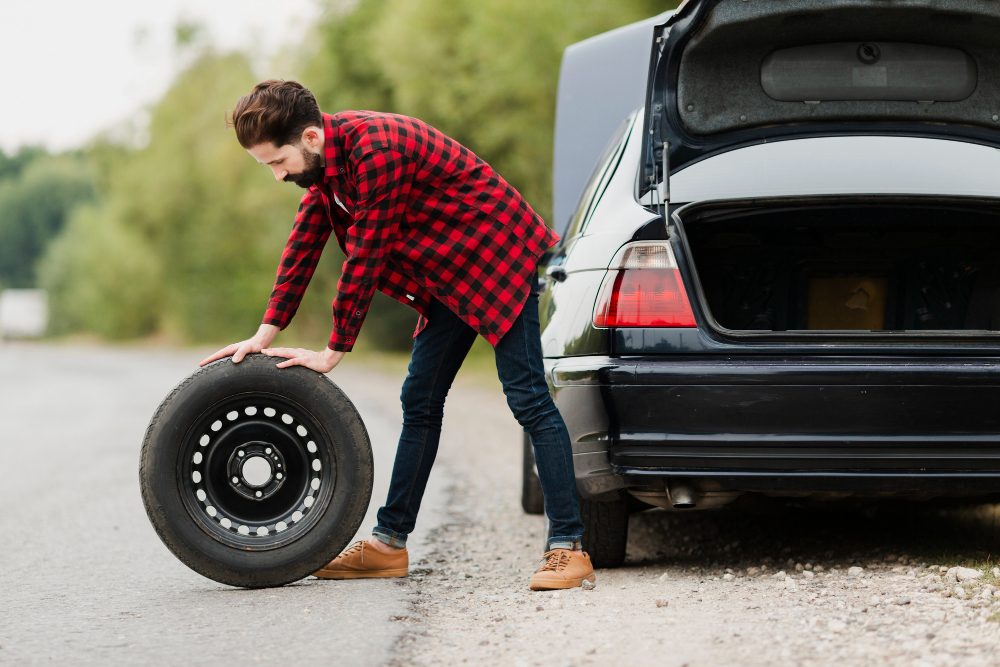Are you puzzled as to why all your tires are low on air pressure? It can be quite frustrating, especially when you’re not sure what’s causing it. But fear not, for we are here to shed light on this mystery and help you find the answers you seek. In this article, we will explore the possible causes behind why all your tires are low and provide you with troubleshooting tips and solutions to resolve the issue.
One common reason for all your tires being low on air pressure could be a slow leak. Over time, tires can develop small punctures or leaks, causing them to gradually lose air. These leaks may not be immediately noticeable, but they can lead to consistently low tire pressure. Another possibility is that your tires simply need to be inflated properly. It’s important to regularly check and maintain the correct air pressure in your tires, as underinflation can cause them to lose air more quickly.
Additionally, extreme temperature changes can affect tire pressure. As the weather gets colder, the air inside your tires contracts, leading to lower pressure. This is a common occurrence during the winter months. On the other hand, hot weather can cause the air inside the tires to expand, resulting in increased pressure. So, it’s crucial to keep an eye on your tire pressure and adjust it accordingly based on the weather conditions.

Now that we’ve explored some possible causes. It’s time to troubleshoot and find solutions to resolve the issue of low tire pressure. By identifying and fixing any leaks, regularly inflating your tires to the recommended pressure, and adjusting for temperature changes, you can ensure that your tires stay properly inflated and ready for the road ahead.
1. Why Is Your Tire Pressure Low?
Tire pressure can become low due to various reasons. One possible cause is a puncture or leak in the tire, which can lead to air slowly escaping. Another reason could be a faulty valve stem, which can cause air to leak out over time. Additionally, extreme temperature changes can cause tire pressure to decrease. When the weather gets colder, the air inside the tire contracts, resulting in lower pressure. It’s also possible that the tires were not properly inflated to begin with, or that there is a problem with the tire pressure monitoring system. These are just a few of the common factors that can contribute to low tire pressure.
How To Fix Low Tire Pressure
Low tire pressure can be a common issue that drivers encounter. But it is important to address it promptly to ensure safety on the road. Fortunately, fixing low tire pressure is a relatively simple task that can be done by following a few steps.
Check the Pressure
Before attempting to fix low tire pressure, it is crucial to first check the current pressure of the tires. This can be done using a tire pressure gauge, which can be purchased at most automotive stores.
Add Air
Once the current pressure is determined, it is time to add air to the tires. This can be done at a gas station or with a portable air compressor. It is important to add the appropriate amount of air based on the recommended pressure for the specific vehicle.
Monitor the Pressure
After adding air, it is important to monitor the tire pressure regularly to ensure it remains at the correct level. This can be done using a tire pressure gauge or by regularly checking the tire pressure monitoring system in the vehicle.
By following these simple steps, drivers can easily fix low tire pressure and maintain optimal safety on the road.
3. Common Reasons Why All Tires Are Low
Low tire pressure can be caused by various factors, and it is important to identify the root cause to effectively address the issue. One common reason for all tires being low is temperature fluctuations. As the temperature drops, the air inside the tires contracts, leading to a decrease in tire pressure. Another possible cause is a slow leak in one or more tires. This can be due to a puncture, a damaged valve stem, or a faulty tire bead. Additionally, improper tire maintenance can contribute to low tire pressure. Neglecting to check and inflate the tires regularly can result in gradual pressure loss. It is also worth noting that over time, tires naturally lose air due to permeation. Therefore, even without any visible issues, it is essential to monitor and maintain proper tire pressure to ensure optimal performance and safety.
What Should I Do About Low Tire Pressure?
If you notice that your tire pressure is low, it is important to take immediate action. Ignoring this issue can lead to serious consequences, such as reduced fuel efficiency, increased tire wear, and even a potential blowout. So, what should you do?
Check your tire pressure regularly
Make it a habit to check your tire pressure at least once a month. This simple task can help you catch any low pressure issues early on and prevent further damage.
Inflate your tires to the recommended level
If you find that your tire pressure is low, you will need to inflate your tires to the recommended level. This information can usually be found in your vehicle’s owner’s manual or on a sticker located on the driver’s side door jamb. Use a reliable tire pressure gauge to ensure accuracy.
Remember, maintaining the proper tire pressure is crucial for your safety and the longevity of your tires. Don’t neglect this important aspect of vehicle maintenance.
Troubleshooting Low Tire Pressure: Causes and Solutions
Identifying the Root Causes
One common cause of low tire pressure is a slow leak, which can be caused by a nail or other sharp object puncturing the tire. Another possible cause is a damaged valve stem, which can result in air leakage. Additionally, temperature changes can cause tire pressure to decrease, so it’s important to regularly check your tire pressure during extreme weather conditions.
Resolving the Issue
To fix low tire pressure, start by visually inspecting the tires for any signs of damage or objects stuck in the tread. If you find a nail or sharp object, it may be necessary to repair or replace the tire. If the valve stem is damaged, it will need to be replaced. In cases where temperature changes are causing the pressure to decrease, simply adding more air to the tires should resolve the issue.
Remember to check your tire pressure regularly and maintain it at the recommended level to ensure optimal performance and safety on the road.
Discover the Possible Causes of Low Tire Pressure
Low tire pressure can be caused by a variety of factors. One possible cause is a puncture or leak in the tire itself. This can occur from driving over sharp objects or hitting potholes. Another common cause is a faulty valve stem, which can allow air to escape slowly over time. Additionally, extreme temperature changes can cause the air inside the tires to expand or contract, leading to a decrease in pressure.
Other potential causes of low tire pressure include a damaged or worn-out tire bead, which can prevent a proper seal between the tire and the wheel, and a malfunctioning tire pressure monitoring system (TPMS), which may not accurately detect and alert you to low tire pressure. It is important to identify the specific cause of low tire pressure in order to effectively address the issue and prevent further damage to your tires.
How To Resolve the Issue of Low Tire Pressure
If you find yourself dealing with low tire pressure, there are several steps you can take to resolve the issue. Firstly, you should check the recommended tire pressure for your vehicle, which can usually be found in the owner’s manual or on a sticker inside the driver’s side door jamb. Once you know the correct tire pressure, you can use a tire pressure gauge to check the pressure of each tire.
If any of the tires are below the recommended pressure, you can add air using an air compressor or by visiting a gas station with an air pump. It’s important to add air slowly and check the pressure frequently to avoid overinflating the tires. If you notice that one tire consistently has low pressure, it may be a sign of a puncture or leak, and it’s recommended to have it inspected by a professional. By following these steps, you can effectively resolve the issue of low tire pressure and ensure safe and efficient driving.










